Margaret Brown, the Unsinkable Lady
Lives are rarely defined by a single event, but memories of them often are. Margaret Brown was a woman who became best known as “the Unsinkable Molly Brown”, after she was one of the most high-profile survivors of the Titanic disaster. In fact, she never went by “Molly” during her lifetime. In fact, to her family and friends she was usually just Maggie. As for “Unsinkable” though; that she most definitely was. And not just for surviving the Titanic.
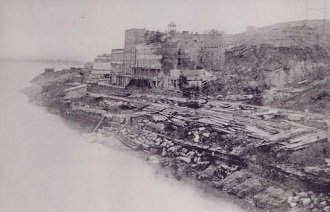
Maggie was born as Margaret Tobin in the town of Hannibal, Missouri in 1867. Nowadays Hannibal is best known for a more famous native: Samuel Langhorne Clements, better known as Mark Twain. Maggie and her siblings grew up in the countryside that had inspired the adventures of Tom Sawyer, and perhaps their adventures were not dissimilar. She had two brothers and a sister, as well as two half-sisters; one from her father’s first marriage and one from her mother’s. Her parents were widowed rather than divorced; as good Irish Catholic immigrants they would not have been able to divorce anyway. Maggie got her education in a school run by her Aunt Mary, and left it as a teenager to work in the local tobacco processing factory. Until she turned 18, and left Hannibal behind.
In 1885 there was a mini-exodus from Hannibal, as Maggie left along with her brother Daniel and her half-sister Mary Ann. Mary Ann had married a man named John Landrigan who was heading to Leadville in Colorado to set up a blacksmith’s shop. She and Daniel decided to go along, and the pair of them shared a two-bedroom cabin. Leadville was a silver-mining town, and a prosperous one. It was also known as one of the most wildest towns in the west. The first town marshal had been run out of town, and the second had been shot dead. Only a year before Maggie moved there Doc Holliday had shot a man over a five dollar debt and been cleared by a jury of any wrongdoing. It was a rough town, but there were fortunes to be made. Daniel got a job in mining, and Maggie found work at the local dry goods store. She also attended the local Catholic church, and that was where she met JJ.
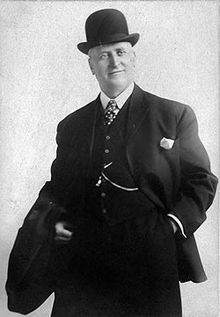
James Joseph Brown, known sometimes as Jim but mostly as JJ, was like Maggie the child of an Irish immigrant. He was from Pennsylvania, and had come to Colorado to try to make it big in mining. JJ was no fool and had made a study of geology and mining theory during the seven years he had spent working in the industry before moving to Leadville. He was thirty-two years old and he fell for the nineteen year old Maggie hard. Maggie was reluctant, at first. She had come to Leadville to “marry a rich man”, in her own words, and JJ was far from rich. But she soon realised that she was in love with him, and that she’d rather marry a man she loved than marry for riches and be miserable. So she said yes, and the two of them were married on the 1st September 1886.
JJ had a job as a foreman at a local mining company who had several silver mines in Leadville. It provided enough for the family to be comfortable, and they had two children; Lawrence, who was born in 1887, and Helen who came along two years later. Maggie was happy, and buoyed up by her new children she threw herself into the local community. She worked at a soup kitchen, and became active in local feminist causes. She was a charter member of the Colorado Chapter of the National American Women’s Suffrage Association. The was one of the most successful women’s suffrage movements in the country; with women in Colorado being granted the vote in 1893. JJ tolerated her feminism, though he wasn’t an enthusiastic supporter. He gained a lot of prestige in his profession though, and in 1891 he went into partnership with a group of local mining engineers to form their own company. It was called the Ibex Mining Company, and JJ had a small number of shares and a position as chief mining engineer. Maggie had moved from the working class to the comfortable upper echelons of the middle class, and life was good. At least until 1893, when the Sherman Silver Purchase Act was repealed, and the price of silver crashed.
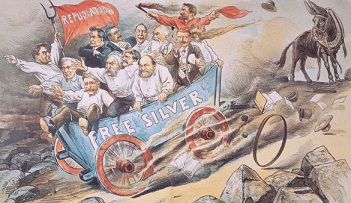
The Sherman Silver Purchase Act was a law that required the US Government to buy a certain amount of silver each year in order to mint silver dollars. The problem came when an economic crash caused the value of the currency to drop, along with the price of silver. This led people to try to trade silver-backed notes for gold ones, further depressing the price. Eventually the government had to repeal the Sherman Act, which was the death-knell for many of the silver mines and for the boom times in Leadwell.
Luckily for Maggie, the man she had married was smart enough to see an opportunity in the collapse. His geological experience led him to think that one of the Ibex mines had veins of gold deep beneath the silver. The problem was that the dolomite that the gold was buried in was powdery, like sand, and mining it out without the tunnels caving in was considered impossible. However JJ had heard of a method of shoring up the tunnel walls with straw bales, and thought that this could allow them to access the gold. He was right. By October of 1893 “Little Jonny” (the mine) was producing hundreds of thousands of dollars worth of gold ore each day. The company was saved, and Leadville itself was also saved. JJ was given 12,500 shares of stock and a seat on the board in recognition of his contribution. The shares were worth two and a half million dollars, a massive amount at the time. All of a sudden the Browns were rich.

They celebrated their success with a tour of America, including a visit to the World’s Fair in Chicago. By Christmas they had returned to Leadville, where they celebrated in their old family home. They didn’t stay there very long, though. They decided to move their family to Denver, and in April JJ bought a mansion there. It was a beautiful modern house (for the time), which had been built in the 1880s for Isaac and Mary Large. Ironically it was the silver crash which had forced them to sell it. JJ bought it for thirty thousand dollars, and it became Maggie Brown’s home for the rest of her life.
JJ and Maggie had a brief moment of celebrity for their sudden success, with the newspapers exaggerating it as a “rags to riches” tale. This cast Maggie as a spendthrift who had driven JJ to bankruptcy before his “lucky strike” – a far cry from the truth. It was true though that their humble origins did lead some in Denver society to turn up their noses at the Browns. The strange notion that it was more “respectable” to be born rich was a common one, and their status as Irish-American Catholics didn’t help. However many in “high society” were no different from them and had no such prejudice, since they had made their fortunes in mining as well. So it wasn’t that difficult for Maggie to make her way. She did remain in touch with her Leadville friends though; especially her brother Daniel and his wife, and their newly born first baby daughter.

In 1895 the Browns took their family on a tour of Europe, and Maggie found a new world opened up to her. A world of arts, literature and language. Contrary to later stereotyping she had always been an intelligent and literate woman, but now she had the leisure to indulge in her desire to learn. She became fluent in several European languages, but it was Paris and France that held a special place in her heart.She even founded a branch of the “Alliance Francaise” in Denver, to promote a connection to the country. More importantly, she became determined that all of her children would enjoy the educational opportunities she had not.
She also decided to take advantage of those opportunities herself in 1900. Ill health had forced JJ to retire from active business by this point. They’d originally planned to move to Ireland for four years, but they only lasted a year in their Killarney retreat before the sedate life proved too sedate for them. In 1900 Maggie put her daughter Helen into a French convent to study, dropped her son Lawrence off in an exclusive boarding school, and then went to school herself. She was one of the first students of the Carnegie Technical Schools in Pittsburgh, nowadays known as the Carnegie Mellon University. It was vaguely scandalous for a society women to go to university, but since Maggie was already well known as an ardent feminist and suffragette this was perfectly in character for her.
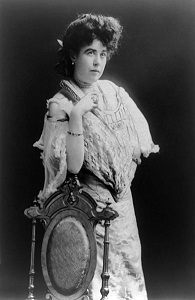
Maggie’s first year in university was delightful, but her second year was derailed when during the Christmas break her husband JJ was sued for “alienation of affections”. That was a nice legal way of saying that he had been sleeping with another man’s wife. The Browns settled out of court, but the press coverage was loud and vicious. To escape the gossips of Denver, they rented out their house (to the Governor of Colorado, no less) and set off on a round-the-world trip. They spent a year in travel, with Maggie most impressed by India and JJ by Japan. Maggie turned heads in society with her Japanese clothing and the hairstyle she had picked up there, enhancing her reputation as an unconventional trendsetter.
Tragedy struck the extended family of the Browns when Daniel Tobin’s wife passed away. Rather than have Daniel’s daughters raised by governesses (and realizing her brother’s incapability of raising them himself), Maggie took the three young children into her home and raised them as if they were her own. Her charity may have began at home, but it did not end there. She was heavily involved in charity work, and became well known for helping Judge Ben Lindsey establish the first juvenile court in America. However in one very specific case she reached the bottom of her well of charity. In 1909 she officially separated from JJ. His unfaithfulness, and his unwillingness to accept her public works and feminism, had brought their life together to an end. They remained on friendly terms, though he moved out and into a New York apartment.
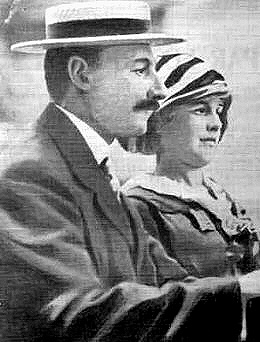
By 1912 Maggie’s daughter Helen was 22, and her mother had secured her a place at the prestigious University of Paris (known then colloquially, and nowadays officially, as the Sorbonne). After she had said goodbye to Helen her mother decided to continue her travels around the Mediterranean. In Egypt Maggie joined the traveling party of John Jacob Astor IV and his wife Madeline. Their marriage was controversial; Jack Astor was 47 and his new wife was only 18. He had divorced his wife to marry her, and he was still considered an outcast from Polite Society. Maggie didn’t care, though. The group took in the Sphinx and the Pyramids, but their plans were changed when Maggie received word that her son Lawrence was ill. She set off back to America, and was joined by the Astors. Madeline was pregnant, and Jack wanted the child born in America. The group crossed the Mediterranean and came ashore in France, then traveled across the country to Cherbourg. They were in luck, or so they thought, as the grandest ship in the world was about to make its maiden voyage to New York. That was how Maggie Brown and the Astors came to book their passage on the RMS Titanic.
Of course, everyone knows what happened next. The Titanic left Cherbourg on the evening of the 10th April, and was expected to reach New York on the 17th. Maggie and her friends thought that all they had to worry about was running out of conversation during a week of shared meals and elegance. Instead shortly before midnight on the 14th April the ship collided with an iceberg and suffered what turned out to be fatal damage. An hour later the passengers lucky enough to get onto lifeboats left the ship. Madeline Astor was on the first lifeboat to leave, Lifeboat Number 4. Maggie was on the second, Lifeboat Number 6. Jack Astor stayed on the Titanic, smoking a cigarette with the mystery writer Jacques Futrelle.
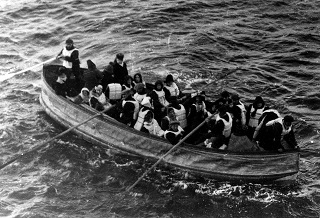
It was on Lifeboat Number 6 that Maggie earned her nickname of “The Unsinkable Mrs Brown”. Far more used to danger and privation than the society ladies on board, Maggie didn’t fall into the daze of disbelief that afflicted so many involved in the disaster. Reportedly she yelled at her fellow passengers and ordered them to begin rowing, as they needed to put some distance between them and the ship to avoid being pulled down if it sank. An hour and a half after Lifeboat Number 6 had been launched, and with two-thirds of her passengers still aboard, the Titanic broke apart and sank to the bottom. Of the people still not on lifeboats only 13 survived falling into the water, which was cold enough to kill within minutes. Jack Astor was one of those who clung onto the side of a boat, and who soon let go as the water froze them to death.
At 4am the HMS Carpathia arrived and began rescuing the survivors. Once on board Maggie reputedly got into an argument with the captain, insisting that he put a boat back into the water and search for survivors. Whether he did or not is disputed, but it would have been a fruitless endeavor. Maggie was undaunted and soon organised a “Survivor’s Committee” to see to the needs of the seven hundred who had made it. Her fluency in German, Russian and French were invaluable in letting her communicate with those who spoke no English. In addition she sent telegrams ahead to New York, ensuring that her friends there had raised over $10,000 to help support the survivors when they arrived. The papers, desperate to find some hope to cling to, christened her “the hero of the Titanic”.
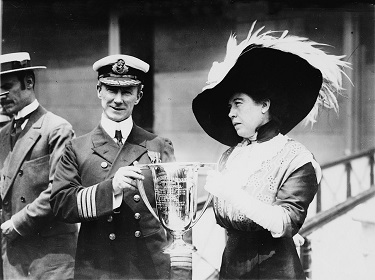
When the boat did reach New York, Maggie did not leave it until every one of the survivors had been found somewhere to stay, or some friend to take care of them. Maggie herself sent out letters and telegrams to all and sundry letting them know that she had survived (and in some sad cases, letting them know that other friends had not). The Survivor’s Committee remained in place as the fallout from the disaster continued over the months to come. Maggie presented awards to the Carpathia crew members, and helped arrange for memorials to those who had died. The law at the time did not allow a woman to testify in a court tribunal such as that which took place on the disaster, something which Maggie protested against in vain. When she was finally denied the right to give it in court, Maggie gave her testimony to the newspapers in America, England and France instead. It was published and became for many at the time the definitive account of the disaster.
Maggie’s new-found fame allowed her to campaign more thoroughly on the feminist issues that mattered to her, including women’s suffrage. Like many suffragettes she was also involved in fighting for worker’s rights. In 1914 she and her friends planned an audacious move. Though women did not have the vote (and would not for another eight years), they decided to have Maggie campaign for the post of Colorado State Senator in the 1914 elections. This might not be the first time she’d considered something like this. There are stories that she planned to run in the elections for the Colorado Senate in 1901, but those plans were derailed by JJ’s court case for adultery. If so, then history was about to repeat itself. This time, what derailed Maggie’s plans was something far more serious than her husband’s wandering affections. It was World War I.
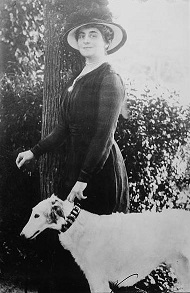
There were many Americans with ties to France, through the Alliance Francaise and other organisations. Though America was neutral, private citizens were allowed to lend aid in a charitable manner. The most famous of those to do so was Anne Morgan, the youngest daughter of JP Morgan. She founded the American Fund for French Wounded, which helped to minister to injured French soldiers at a hospital in the Château de Blérancourt in northern France. About 350 American women worked as volunteers in the hospital. Maggie was one of them, and she also worked to raise funds and to organise the transport of supplies from America. When the USA joined the war, she volunteered a house she owned in Rhode Island to the Red Cross. Her son Larry was one of those who volunteered and who served in the trenches of northern France. After the war Maggie was one of the charter members of CARD, an American charity that funded the rebuilding of a France devastated by war.
In 1922 JJ Brown died at the age of 67 after suffering a heart attack. He hadn’t made a will, and it turned out that his fortune had been badly managed. The estate was only valued at $238,000; and Maggie and her children soon fell out over how to divide it. There was a court case that dragged on for five years, and eventually Maggie received half of the estate. Perhaps due to the blame thrown at her for “extravagance”, the majority of this was tied up in a trust fund. The remainder was divided equally between her two children in trust funds. The wounds opened in court ran deep, and it’s unclear whether Maggie ever reconciled with Larry and Catherine.

Following this reduction in circumstances Maggie lived more quietly, though she remained involved in charity work. She and Anne Morgan worked together to have the Château de Blérancourt turned into a museum, and both of them received the Légion d’Honneur for their actions during and after the war. Maggie became deeply interested in acting around this time, and was a deep admirer of the actor Sarah Bernhardt. Maggie took to the stage herself and was praised for her role in “L’Aiglon”, one of Sarah Bernhardt’s classic plays. In 1932 at the age of 65 Margaret Brown died in her sleep, from what turned out to be a brain tumour. She was buried next to JJ in the Cemetery of the Holy Rood in Long Island, New York.
Maggie’s funeral was a private affair, but her death was widely reported. Most newspapers were sensationalist rather than accurate, with one claiming that she had “met her husband at the bottom of a mineshaft and married him within three weeks”. (The same obituary referred to JJ as “Leadville Johnny” and gave the couple an extra daughter, among many other inaccuracies.) Over time the stories of her life became even further and further from the truth. In 1938 the journalist Gene Fowler wrote an extraordinarily fantastical account of her life in his column Timber Line. In his tale Maggie runs away from home as an illiterate 15 year old and married a 37 year old “Leadville Johnny” three weeks after arriving in the “mining camp”. (Their real ages had been 19 and 31, clearly not quite scandalous enough.) This version of JJ is equally miles away from the brilliant mining engineer of reality, and gains his fortune through luck rather than ingenuity. Fowler repeats the bizarre claim that Maggie had accidentally burned the hundreds of thousands of dollars that JJ had been paid for his first gold claim, a calumny that the gossip columns in Denver had made up back in the early days when they sought to put this jumped-up nouveau riche Catholic in her place. And among other bizarre fictions, Fowler even has Maggie passing the time on board the Titanic by throwing grapefruits overboard and shooting them as they fell.
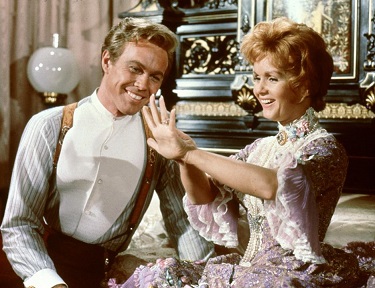
Clearly Maggie’s legend was far more popular than the reality, and in 1960 it even claimed her name. A musical based on her life (or rather, based on the bizarre popular fictional version of her life) was created by Meredith Wilson. He renamed her “Molly”, as he found that the easiest diminutive of Margaret to find rhymes for. Unfortunately for her memory The Unsinkable Molly Brown was a runaway success that became a movie which earned an Oscar nomination for its star Debbie Reynolds. Quite how much it set the tone can be seen in how thereafter she was almost entirely referred to as “Molly”, despite never being called that when she was alive. Even the museum that her house became in Denver is known as the “Molly Brown House Museum”, though this is in part due to it having been founded off the back of the popularity of the film. The museum does do its best to promote the reality of Margaret Brown’s life, though. It and the excellent biography Molly Brown: Unraveling the Myth by Kristen Iversen stand almost alone as the islands of truth in the sea of myth. Sadly it seems that for Margaret Brown as for so many other historical figures, a simple story is preferable to a complicated truth.
Pictures via wikimedia except where stated.
